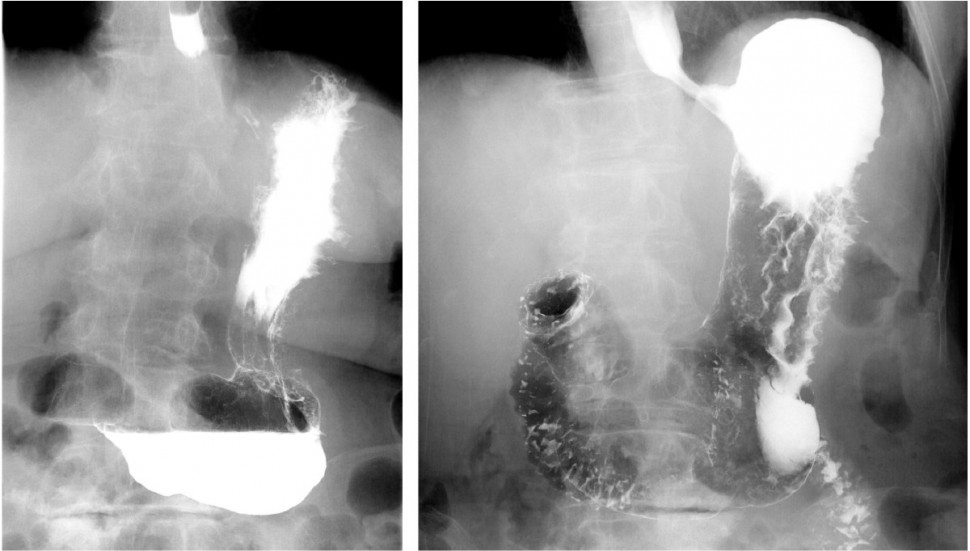October 24, 2015 - Both double-contrast upper gastrointestinal barium X-ray radiography (UGI-XR) and enlarged gastric folds are significant predictors for future gastric cancer incidence, according to a recent study.1
Double-contrast upper gastrointestinal barium X-ray radiography (UGI-XR) is the standard gastric cancer screening method in Japan. Atrophic gastritis and enlarged gastric folds are considered the two major features of Helicobacter pylori-induced chronic gastritis, but the clinical meaning of evaluating them by UGI-XR has not been elucidated. The authors of the study analyzed healthy UGI-XR examinees without a history of gastrectomy, previous Helicobacter pylori eradication and usage of gastric acid suppressants.
Of the 6433 subjects, 1936 (30.1 %) had atrophic gastritis and 1253 (19.5 %) had enlarged gastric folds. During the 3-year prospective observational follow-up, gastric cancer developed in seven subjects, six of whom (85.7 %) had atrophic gastritis with H. pylori infection and five of whom (71.4 %) had enlarged gastric folds with H. pylori infection.

Image: Barium upper gastrointestinal X-ray series findings. Barium upper gastrointestinal X-ray series indicating rigidity and poor extensibility of the gastric wall from the upper to lower gastric body.2
The results from the Kaplan-Meier method with log-rank testing revealed that both UGI-XR-based atrophic gastritis (p = 0.0011) and enlarged gastric folds are significant predictors for future gastric cancer incidence.
References:
- Yamamichi N, Hiraon C, Ichinose M, et al. Atrophic gastritis and enlarged gastric folds diagnosed by double-contrast upper gastrointestinal barium X-ray radiography are useful to predict future gastric cancer development based on the 3-year prospective observation. Gastric Cancer. pp 1-7. 20 October 2015.
- Kamata et al. Journal of Medical Case Reports 2012 6:231. doi:10.1186/1752-1947-6-231.




